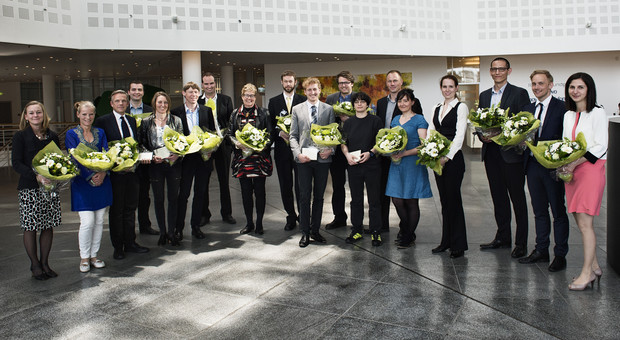The Novo Nordisk Foundation Excellence Project consists of up to four five-year grants of 5 million Danish kroner each within the fields of basic, translational and/or clinical endocrinology research. This year, Simona Chera was awarded one of these 4 🙂
The goal of the project “Characterizing and reversing β-cell senescence and proliferation quiescence in monogenic diabetes” is to elucidate and reverse the molecular age-switch controlling the homeostatic gradual decay and proliferation quiescence of β-cells in a form of monogenic diabetes.
Abstract: Cell senescence is defined as a permanent exit from cell cycle. Pancreatic β-cells undergo rapid postnatal senescence and subsequent proliferative quiescence. Yet, in certain conditions, β-cells are able to retain/regain a juvenile status and maintain their proliferative capacity. We recently described one such situation following total β-cell ablation in juvenile mice. Naturally regenerated β-like cells express β-cell maturity markers and respond to glucose, yet even long time after ablation they still preserve low levels of senescence factors, manifesting a massive proliferation potential. These results and others suggest that the senescence program is not permanently reinforced and β-cell senescence is reversible. Here I will assess the role of β-cell senescence and subsequent proliferative quiescence on MODY3 (Maturity Onset Diabetes of the Young type 3) monogenic disorder onset. I postulate that β-cell decay results from a synergetic combination of a single gene defect and an age-related, potentially reversible, senescence mechanism. The goal of this proposal is to elucidate and reverse the molecular age-switch controlling the homeostatic gradual impairment and proliferation quiescence in β-cells. In order to achieve this, I raised the following questions: what are the age-related molecular changes leading to β-cell decay? what is the impact of β-cell senescence and proliferation halt on MODY3 onset? which rejuvenation strategies can reverse the senescence-switch and delay MODY3 onset? are these findings translatable in humans? To reply to these questions we plan to generate two different murine models of MODY3 disorder and cross them with genetic β-cell tracing and available models of senescence. This study will provide the first systematic cellular and molecular timeline of β-cell decay in the context of MODY3 disorder with emphasis on the role of cellular senescence and proliferation in the age-related monogenic disease initiation.

